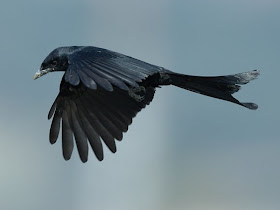Yellow-footed green pigeon (Hariyal) to remain Maharashtra state bird
As the State Wildlife Board on Monday turned down Bombay Natural History Society’s (BNHS) proposal to declare forest owlet as the new state bird of Maharashtra, the yellow-footed green pigeon (Hariyal in Marathi) will continue to remain the state bird.
State officials said that, Forest owlet is found in few places in Satpura range in Maharashtra including Nandurbar, Jalgaon and Amravati, while the state bird yellow-footed green pigeon is found in all the states of India and everywhere Maharashtra, and also in Pakistan and Afghanisatan.
The BNHS had urged the state Forest Department to declare the critically-endangered and rare forest owlet, which is unique and endemic only to Maharashtra should be declared as the state bird.
“But the State Wildlife Board, in its meeting decided that the green pigeon will remain the state bird. Since the forest owlet is very rarely found, it was decided that it can not be a state bird,” Dr S K Khetarpal, Principal Chief Conservator of Forest (Wildlife) told PTI.
While BNHS scientists had argued that 19 Indian states have their state birds, which are rare, unique and a threatened specie, like the white-winged wood duck is the state bird of Assam, blood pheasant of Sikkim, black-necked crane of Jammu and Kashmir.
However, BNHS claimed that there was no discussion on the issue in the meeting today, “as the decision on the issue was taken already as it was clear from the details of agenda of the meeting.” BNHS scientists said that they would continue with their demand for the forest owlet to be made the state bird.
As the State Wildlife Board on Monday turned down Bombay Natural History Society’s (BNHS) proposal to declare forest owlet as the new state bird of Maharashtra, the yellow-footed green pigeon (Hariyal in Marathi) will continue to remain the state bird.
State officials said that, Forest owlet is found in few places in Satpura range in Maharashtra including Nandurbar, Jalgaon and Amravati, while the state bird yellow-footed green pigeon is found in all the states of India and everywhere Maharashtra, and also in Pakistan and Afghanisatan.
The BNHS had urged the state Forest Department to declare the critically-endangered and rare forest owlet, which is unique and endemic only to Maharashtra should be declared as the state bird.
“But the State Wildlife Board, in its meeting decided that the green pigeon will remain the state bird. Since the forest owlet is very rarely found, it was decided that it can not be a state bird,” Dr S K Khetarpal, Principal Chief Conservator of Forest (Wildlife) told PTI.
While BNHS scientists had argued that 19 Indian states have their state birds, which are rare, unique and a threatened specie, like the white-winged wood duck is the state bird of Assam, blood pheasant of Sikkim, black-necked crane of Jammu and Kashmir.
However, BNHS claimed that there was no discussion on the issue in the meeting today, “as the decision on the issue was taken already as it was clear from the details of agenda of the meeting.” BNHS scientists said that they would continue with their demand for the forest owlet to be made the state bird.



















































